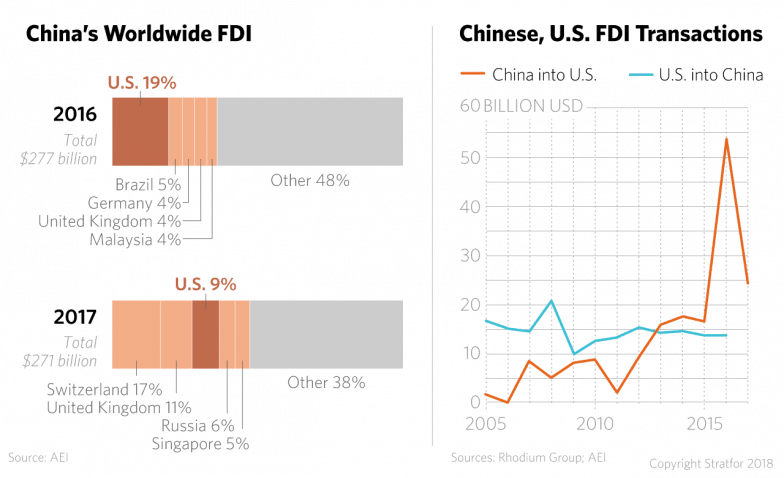In its ongoing pushback against Chinese trade and investment, the White House is reportedly mulling restrictions on Chinese investment that mirror the restrictions imposed by Beijing on U.S. investment in China. Since 2005, the United States has attracted approximately 10 percent of all outbound Chinese foreign direct investment, or FDI. The amount of Chinese FDI heading to the United States has grown tremendously since 2010 in parallel with more Chinese investment in developed markets generally, particularly in those that Beijing has sought to beef up domestically. Because of China’s tight investment policies, the possible move by U.S. President Donald Trump’s administration could have a major impact on the billions of dollars Beijing pours into U.S. industries, especially in sectors that China has prioritized for growth, such as technology, consumer goods and services. It bears noting that Washington is contemplating such measures only against China, but the nature of Chinese investment in the United States provides an indication of the course U.S. authorities may pursue.

Chinese investment in the U.S. economy totaled $24.1 billion in 2017. Although the figure was below a spike of $53.8 billion in 2016 (a rise of 220 percent from 2015), it represented part of a broader, upward trend in which Chinese businesses have invested more than $170 billion in the United States since 2005. With its U.S. investments, Beijing aims to consolidate its presence within a stable, developed economy while also fueling growth in sectors that are necessary for China’s transition, namely in technology and consumer goods. In fact, technology constituted 17.6 percent of 2014-2017 investment — after having been zero from 2005-2014.

China harbors two primary concerns. First, it fears U.S. retaliation on sectors that invest heavily in the U.S. market and are subject to high levels of Chinese domestic restrictions. Here, Washington has much room to maneuver in terms of issuing a proportionate response to address overall outbound Chinese investment. Transportation is the only leading sector of Chinese investment in the United States that is subject to roughly equal levels of protectionism; in contrast, there is a wide gap between U.S. and Chinese policies on real estate and financial services. Second, there are concerns in Beijing regarding sectors that the government has prioritized for development in an effort to push China up the value chain and transition to a consumption-led model. On this, technology and consumer goods are the most important, and in both cases, Washington has the potential to push back hard due to China’s domestic restrictions.













Leave A Comment